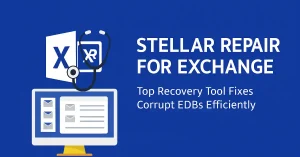The 5G network, the fifth generation of wireless technology, represents a transformative leap in global connectivity. Offering blazing-fast speeds up to 10 Gbps, ultra-low latency as low as 1 millisecond, and the capacity to connect millions of devices per square kilometer, It is redefining industries from telecommunications to healthcare, automotive, and smart cities. Developed by the 3rd Generation Partnership Project (3GPP), 5G New Radio leverages advanced spectrum bands, including millimeter waves (mmWave) and sub-6 GHz, to deliver enhanced mobile broadband (eMBB), ultra-reliable low-latency communication (URLLC), and massive machine-type communication (mMTC).
Since its commercial debut in 2019, 5G has expanded rapidly, with deployments in over 70 countries by 2025. This guide provides an in-depth exploration of 5G technology, covering its technical architecture, use cases, global rollout, security considerations, and future trends like 5G-Advanced and 6G. Whether you’re a networking professional, student, or technology enthusiast, this article is your definitive resource for understanding the next generation of wireless networks.
Core Fundamentals
5th Generation represents the most recent telecommunications standard, building upon previous 4G LTE foundations. Developed under strict 3GPP standards, this technology enables transformative applications with key features:
- Superior Data Rates: Achieve peak speeds of 10 Gbps. That’s about 100 times faster than 4G’s top speeds.
- Super Fast Response: With 1 ms latency, it beats 4G’s 20-30 ms delay. This speed is crucial for systems that need quick reactions.
- Dense Device Support: Supports 1 million connected devices in just 0.386 square miles. This setup is ideal for Internet of Things needs.
- Resource Efficiency: Reduce power needs by around 90% for each transmission bit, compared to 4G standards.
- Customizable Infrastructure: It supports virtual network subdivisions. These are tailored for specific scenarios, like autonomous vehicles and industrial sensors.
This versatility enables applications across numerous fields, from consumer connectivity to manufacturing automation. Commercial deployment started in 2019 with major carriers like Verizon, China Mobile, and SK Telecom.
Technical Architecture
Frequency Distribution
5G systems operate through three distinct spectrum categories, each providing unique operational characteristics:
Lower Frequencies (Below 1 GHz):
- Coverage Reach: Extends to 20 km, particularly suitable for rural implementations
- Performance Range: Delivers 50-250 Mbps, comparable with advanced 4G systems
- Common Applications: Widespread geographical coverage, Internet of Things deployment
- Implementation Reference: 600-700 MHz spectrum utilized throughout T-Mobile’s American network
Middle Frequencies (Sub-6 GHz):
- Coverage Reach: Spans 1-5 km, balancing range against performance
- Performance Range: Delivers 100 Mbps-1 Gbps throughput
- Common Applications: Urban service areas, mobile broadband connectivity
- Implementation Reference: 3.5 GHz bandwidth deployed across European and Asian markets
Upper Frequencies (mmWave, 24-86 GHz):
- Coverage Reach: Limited to 100-500 meters, restricted by environmental barriers
- Performance Range: Achieves peak 10 Gbps throughput
- Common Applications: High-density urban zones, venue-specific coverage, fixed wireless service
- Implementation Reference: 28 GHz spectrum utilized within Verizon’s American network deployment
Structural Framework
5G architecture maximizes adaptability and expansion potential through several components:
5G New Radio: Wireless transmission layer using orthogonal frequency-division multiplexing for efficient signal handling
Core Network: Cloud-native service architecture supporting network virtualization and distributed computing
Small Cell Networks: High-density, low-power transmission points enhancing millimeter wave coverage throughout target zones
Deployment Strategies:
- Non-Standalone Implementation: Leverages existing 4G infrastructure during initial deployment phases
- Standalone Implementation: Creates fully independent 5G networks enabling advanced features like network customization, demonstrated through T-Mobile’s 2020 standalone deployment
Enabling Technologies
- Multi-Antenna Systems: Implements numerous transmission/reception points (64×64 configurations minimum) maximizing capacity and spectrum usage
- Signal Focusing: Concentrates transmission energy toward specific devices, enhancing millimeter wave performance
- Network Virtualization: Creates purpose-built virtual environments supporting specialized application requirements
- Distributed Computing: Processes information near usage points, minimizing delay for time-critical applications
- Spectrum Allocation: Enables concurrent 4G/5G operation across shared frequencies, facilitating smooth migration paths
Business Applications
5G capabilities enable transformative implementations across multiple industries.
Enhanced Mobile Connectivity
This category delivers superior connectivity for consumer and commercial applications:
- Notable Applications: Ultra-high-definition streaming content, virtual/augmented reality experiences, cloud-based gaming platforms
- Commercial Examples: Verizon’s Ultra Wideband service enabling 4K video streaming throughout stadium environments
- Consumer Advantages: Accelerated downloads, uninterrupted video communications, immersive digital interactions
Ultra-Reliable Time-Sensitive Communication
This technology ensures instantaneous, dependable connectivity for mission-critical systems:
- Notable Applications: Autonomous transportation, remote medical procedures, factory automation systems
- Commercial Examples: Ericsson’s demonstration projects achieving remote surgical operations with 1 ms response times
- Operational Advantages: Real-time system responses, exceptional reliability standards (99.999% operational guarantees)
Large-Scale Machine Networks
This capability supports extensive sensor and device ecosystems:
- Notable Applications: Urban systems monitoring traffic patterns, agricultural sensor networks tracking environmental conditions, utility management through smart metering
- Commercial Examples: China Mobile’s network connecting beyond 1 million devices throughout Shanghai metropolitan areas
- Implementation Advantages: Massive scaling capabilities, minimal energy requirements enabling decade-long battery operation for specific devices
Enterprise-Specific Networks
Dedicated 5G implementations provide specialized connectivity for business environments:
- Notable Applications: Manufacturing complexes implementing Industry 4.0, port facilities, healthcare institutions
- Commercial Examples: Nokia’s dedicated implementation at Hamburg Port optimizing logistics operations
- Business Advantages: Advanced security protocols, performance customization capabilities, minimal response delays
Global Implementation Status
Through May 2025, 5G has been deployed across over 70 countries serving approximately 2.5 billion subscribers according to GSMA statistics.
Asian Markets
South Korean Implementation: SK Telecom began 5G service during April 2019, deploying 85,000 transmission sites and reaching 4.7 million customers before year-end. Coverage now reaches 90% of national population.
Chinese Market: China Mobile operates 1.5 million base stations since 2023, with 5G-Advanced technology introduced throughout Hangzhou during March 2025 delivering 10 Gbps performance.
Japanese Deployment: NTT Docomo’s infrastructure enables advanced virtual/augmented reality applications throughout metropolitan regions.
North American Progress
United States Market: Verizon’s millimeter wave Ultra Wideband network alongside T-Mobile’s standalone deployment reaches 300 million residents. AT&T provides service across 500+ urban centers since 2024.
Canadian Implementation: Rogers and Bell deliver mid-band connectivity throughout major metropolitan areas while expanding low-band coverage across rural communities.
European Developments
Finnish Deployment: Elisa introduced 5G-Advanced technology in February 2025, targeting industrial IoT implementations.
German Market: Deutsche Telekom provides coverage reaching 80% of the national population with particular emphasis on network virtualization technologies.
British Implementation: EE and Vodafone deliver service across 100+ urban centers, supporting enhanced mobile broadband alongside IoT deployments.
Developing Regions
Middle Eastern Markets: Saudi Arabia’s STC deployed infrastructure throughout Riyadh, supporting smart city initiatives.
African Implementation: South Africa’s MTN delivers service throughout Johannesburg with specialized IoT applications supporting mining operations.
Latin American Progress: Brazil’s Claro launched service throughout São Paulo, prioritizing urban connectivity solutions.
Security Considerations
Vulnerability Considerations
5G’s expanded capabilities introduce new security requirements:
- Connected Device Risks: Billions of networked endpoints increase potential distributed denial-of-service attack vectors
- Network Subdivision Concerns: Improperly configured virtual network segments potentially expose sensitive information
- Component Sourcing Issues: Reliance on specific manufacturers raises potential security implications
- Threat Statistics: Security firm Thales documented 300% increase in 5G-specific attacks through 2024
Protection Strategies
- Advanced Cryptography: Implementing 256-bit encryption standards surpassing 4G’s 128-bit protection
- Quantum-Resistant Security: Thales PQC technologies addressing emerging quantum computing threats
- Artificial Intelligence Security: Machine learning systems detecting anomalous traffic patterns across 5G networks
- Continuous Verification: Implementing persistent authentication requirements for all devices and users
- Compliance Requirements: Meeting GDPR, NIST framework, and 3GPP security specifications
Future Technology Evolution
5G-Advanced (Release 18)
Released in 2024, 5G-Advanced enhances established capabilities:
- Performance Metrics: Delivering 10 Gbps downstream alongside 1 Gbps upstream connectivity
- Technical Advancements: Artificial intelligence network optimization, extended reality support, integrated sensing/communication capabilities
- Initial Deployments: China Mobile (Hangzhou region, 2025), Elisa (Finland, 2025)
- Emerging Applications: Holographic communication systems, next-generation device networks
6G Technology Development
Anticipated by 2030, 6G will substantially extend connectivity boundaries:
- Performance Targets: Achieving 1 Tbps throughput—100 times beyond current 5G capabilities
- Responsiveness Goals: Sub-millisecond latency enabling instantaneous artificial intelligence applications
- Core Technologies: Terahertz wave transmission, artificial intelligence network architecture, quantum communication protocols
- Anticipated Applications: Neural interface systems, ubiquitous sensing networks, comprehensive digital replication environments
- Research Programs: NGMN and ITU developing 6G requirements alongside preliminary testing from Samsung and Nokia
Comparative Analysis
| Capability | 5G Networks | 4G LTE Systems |
| Maximum Speed | 10 Gbps | 100 Mbps |
| Response Time | 1 ms | 20-30 ms |
| Device Density | 1M/km² | 100K/km² |
| Frequency Usage | mmWave + sub-6 GHz | Sub-6 GHz |
| Energy Efficiency | 90% reduction per bit | Baseline reference |
| Primary Applications | Enhanced broadband, ultra-reliable communication, massive machine networks | Mobile broadband, VoLTE |
Implementation Challenges
- Coverage Limitations: Millimeter waves’ restricted range necessitates dense small cell deployment, increasing infrastructure expenses
- Capital Requirements: Transitioning toward a standalone 5G architecture demands substantial investment
- Physical Restrictions: Millimeter wave signals experience significant degradation through structural materials and vegetation
- Public Misconceptions: Inaccurate health concerns persist despite scientific evidence confirming safety (World Health Organization studies, 2023)
- Deployment Disparities: Rural communities experience delayed implementation due to economic constraints
Strategic Deployment Approaches
Network Planning Requirements:
- Conducting a thorough site evaluation for optimal small cell placement, particularly regarding millimeter wave implementation
- Utilizing dynamic spectrum sharing technologies enabling smooth transition from 4G toward 5G across lower frequencies
Security Implementation:
- Establishing a zero-trust security architecture alongside artificial intelligence threat detection
- Maintaining consistent firmware update procedures, addressing emerging vulnerabilities
Performance Assessment:
- Utilizing specialized evaluation tools, including Keysight’s testing platforms, and verifying operational parameters
- Implementing continuous monitoring systems that track latency and throughput metrics throughout time-sensitive applications
Expansion Planning:
- Deploying network virtualization technologies supporting enterprise and Internet of Things implementations
- Establishing upgrade pathways toward 5G-Advanced implementation during 2025-2027
Environmental Considerations:
- Optimizing transmission site configurations, maximizing energy efficiency (demonstrated through Nokia’s AirScale platform)
- Incorporating renewable energy systems to power small cell networks
Concluding Perspective
5G networks change how we connect. They offer amazing speed, quick response times, and support for many devices. This technology affects many areas. It enables immersive digital experiences, supports self-driving cars, and helps create smart cities. Wireless technology is evolving quickly. With 5 G-Advanced development, we are laying the groundwork for 6G. Worldwide implementation is speeding up, pushing these advancements forward. Organizations can address security challenges and use advanced tech, like network virtualization and distributed computing. This way, they can harness the powerful potential of 5G.
For the latest info, check trusted sources like 3GPP, NGMN, and industry leaders such as Ericsson and Nokia. Stay competitive by assessing the changing 5G market and getting ready for 6G, expected around 2030.
FAQs
What is 5G and how does it differ from previous generations?
5G, or fifth-generation wireless, is the latest advancement in cellular technology designed to provide faster data speeds, lower latency, and support for more connected devices compared to 4G. It introduces new radio technologies and spectrum bands, enabling enhanced mobile broadband, massive machine-type communications, and ultra-reliable low-latency communications. This evolution marks a significant leap from 4G, offering improved performance for applications like IoT and autonomous vehicles.
What are the key benefits of 5G technology?
5G offers higher data rates, reduced latency, and increased network capacity, making it ideal for streaming, gaming, and real-time applications. It supports a massive number of devices per square kilometer, enhancing IoT connectivity, and provides energy efficiency for sustainable usage. These benefits pave the way for innovative services like smart cities and advanced healthcare systems.
How does 5G improve internet speed and latency?
5G can deliver peak download speeds of up to 10 Gbps and upload speeds around 1-2 Gbps, far exceeding 4G’s capabilities, due to its use of wider spectrum bands and advanced antenna technologies. Latency is reduced to as low as 1 millisecond, enabling near-instantaneous data transfer, which is crucial for applications like autonomous driving and remote surgery.
What new use cases will 5G enable?
5G will enable transformative use cases such as autonomous vehicles, smart homes, and industrial automation by supporting massive IoT deployments and ultra-low latency. It facilitates augmented reality, virtual reality, and telemedicine by providing the necessary bandwidth and reliability. These applications will revolutionize industries and daily life with seamless connectivity.
How is 5G infrastructure different from 4G?
5G infrastructure relies on a denser network of small cells and advanced massive MIMO antennas to handle higher frequencies and improve coverage, unlike 4G’s larger cell towers. It incorporates network slicing to create virtual networks tailored to specific needs, and uses a more flexible 5G New Radio (NR) standard. This shift enhances efficiency and supports diverse applications on the same network.
Will 5G work with existing 4G devices?
5G requires new devices specifically designed to support its frequency bands and technology, so existing 4G devices will not be compatible. However, 5G networks are designed to coexist with 4G, allowing a gradual transition where 5G-capable devices can switch to 4G in areas without 5G coverage. Users may need to upgrade their devices to fully experience 5G benefits.
What challenges are associated with 5G deployment?
Deploying 5G involves challenges like high infrastructure costs for small cells and fiber backhaul, as well as regulatory hurdles for spectrum allocation. The higher frequencies used by 5G have shorter ranges and can be obstructed by buildings, requiring more sites. Additionally, ensuring widespread coverage and addressing health concerns about radiation are ongoing issues.
How will 5G impact the Internet of Things (IoT)?
5G will significantly boost IoT by supporting millions of devices per square kilometer with low power consumption and high reliability, enabling smart cities and industrial automation. Its low latency and high capacity allow real-time data exchange between sensors and devices, enhancing applications like smart grids and connected healthcare systems. This scalability marks a new era for IoT growth.
What role does spectrum play in 5G performance?
Spectrum is critical for 5G, utilizing low-band for wide coverage, mid-band for a balance of speed and range, and high-band millimeter waves for ultra-fast speeds in dense areas. The availability of wider spectrum bands allows more data to be transmitted simultaneously, improving capacity and performance. Effective spectrum management is key to maximizing 5G’s potential.
When can we expect widespread 5G availability?
Widespread 5G availability is expected to grow steadily from 2020 onward, with initial deployments in urban areas and gradual expansion to rural regions as infrastructure develops. The timeline depends on carrier investments, government policies, and device adoption rates, with full global coverage potentially taking several years. By 2025, 5G is projected to be widely accessible in many markets.





